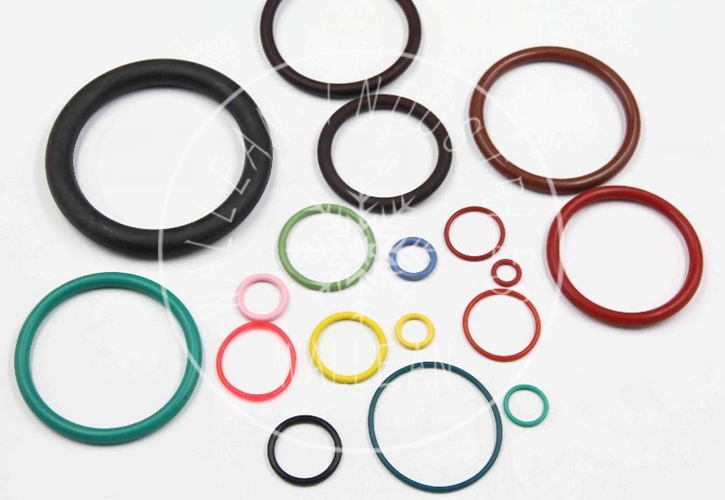
O-ring Gasket
WL-G2090
Description
O-ring is a round ring that is used as a gasket for sealing a connection. They are typically constructed out of polyurethane, silicone, neoprene, nitrile rubber or fluorocarbon. They are designed to be seated in a groove or housing that keeps the ring in place. Once in its track, the ring is compressed between the two pieces and, in turn, creates a strong seal where they meet.The seal that a rubber or plastic O-ringcreates can either exist in a motionless joint, such as between piping, or a movable joint, such as a hydraulic cylinder. However, movable joints often require that the O-ring be lubricated. In a moving enclosure this ensures slower deterioration of the O-ring and therefore, extends the useful life of the product.O-rings are both inexpensive and simple in design and are therefore very popular in manufacturing and industry. If mounted correctly, O-rings can withstand a very large amount of pressure and are therefore used in many applications where leaks or loss of pressure are unacceptable. For instance, O-rings used inhydraulic cylinders preventleakage of hydraulic fluid and allow for the system to create and withstand the pressures required for operation.O-rings are even used in highly technical construction such as space ships and other aircraft.
The Invention & Development of O-ring
A faulty O-ring was deemed the cause of the Space ShuttleChallenger catastrophe in 1986. An O-ring used in the manufacture of the solid rocketbooster did not seal as expected due to the cold weather conditions upon launch. Consequently, the ship exploded after only 73 seconds into flight. This highlights the importance of the O-ring as well as its versatility.Of course, different types of O-rings made out of different materials are used for various tasks. The O-ring needs to be matched to its application. Do not confuse however, similar inventions that are not round. These objects are brother to theO-ring and are instead simply called seals.
Application Non-metalic O-ring:These rings are commonly used in mechanical applications, such as pipe connections, and help to ensure a tight seal between two objects.
Standard O-Ring Materials and applications:
|
Material |
General Properties |
Common Applications |
|
Buna-N |
Good resistance topetroleum,hydrocarbons, fuels.Widely used with most oils, hydraulic fluids, alcohol.Poor resistance to sunlight, weathering and ozone.Many compound variations for specific applications.The least expensive most readily available material. |
Petroleum Oil Seals |
|
Viton?/small> (Fluorocarbon) 75 Durometer Black |
Excellent temperature and chemical resistance. |
Vacuum Seals Many Acids and Fuels Heat Resistance Many Chemicals Many Solvents |
|
Silicone 70 Durometer Red/Orange |
Broad temperature range. Odorless / non-toxic. |
Dry heat Alcohol / Oxygen Electrical / Medical Low Temperature |
|
EPDM / EPR (Ethylene Propylene) 70 Durometer Black |
Resistance to sunlight, weathering and ozone. |
Steam / Hot water Hydraulic / Skydrol Some Chemicals Auto Brake Systems Alcohol / Greases |
|
Neoprene (Chloroprene) |
Good resistance to petroleum oils. |
Refrigeration Seals Freon / Air Conditioning Motor Mounts Engine Coolants |
|
Fluorosilicone ¡¡ |
Wide range of fluid and chemical resistance. |
Aircraft fuel systems Jet Fuel / Gasoline Petroleum Oils Synthetic Jet Oil |
|
Urethane (polyurethane) |
Available in High and Low Grades |
High Pressure Hydraulics Drive Belts |
| PTFE |
Excellent temperature range. |
Temperature Range Chemicals / Fuels Non-elastic |
¡¡
Warning: Gasket materials should never be recommended when both the temperature and the pressure are at the maximums listed. Properties and applications shown are typical. No application should be undertaken by anyone without independent study and evaluation for suitability. Never use more than one gasket in one flange joint, and never reuse a gasket. Improper use or gasket selection could cause property damage and/or serious personal injury. The data reported is a compilation of field testing, field service reports and/or in-house testing. While the utmost care has gone into publishing the information contained herein, we assume no responsibility for errors. The information and specifications contained in this website are subject to change without notice. This revision cancels and obsoletes all previous editions.


